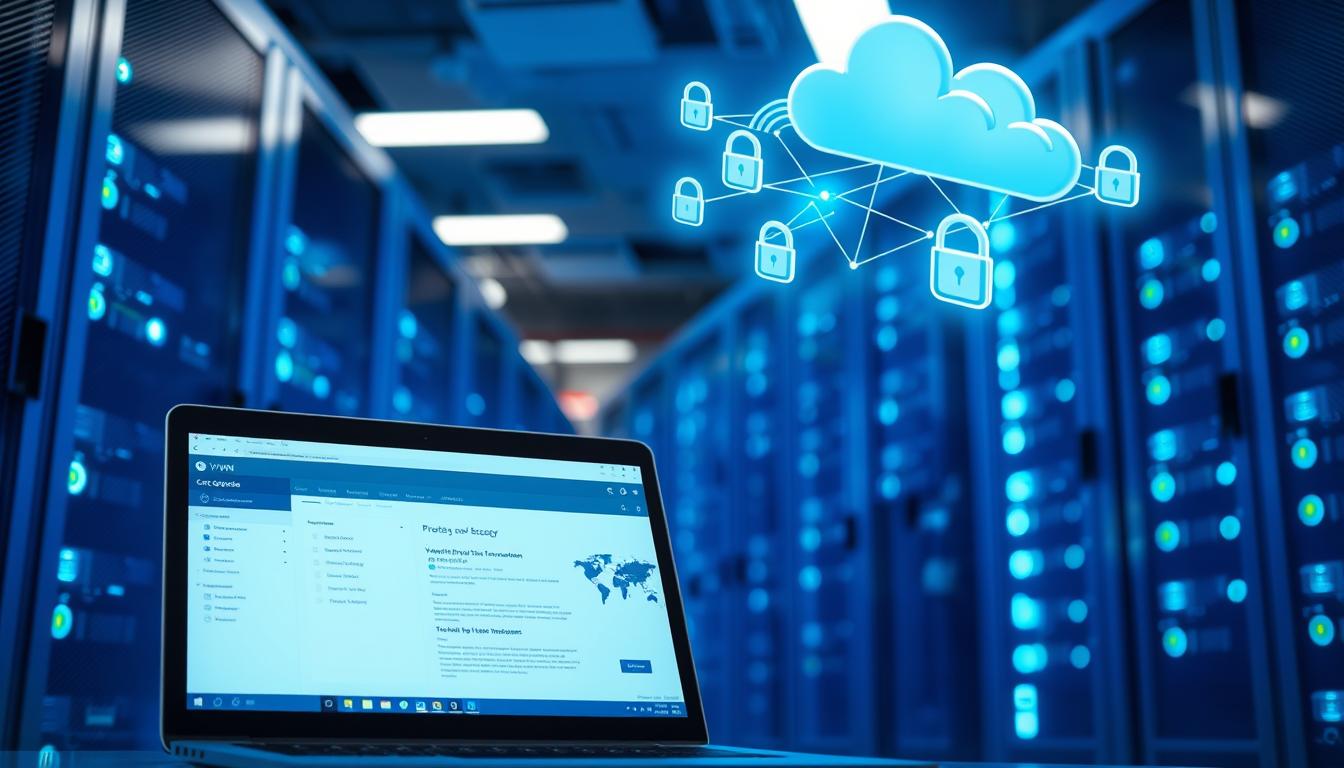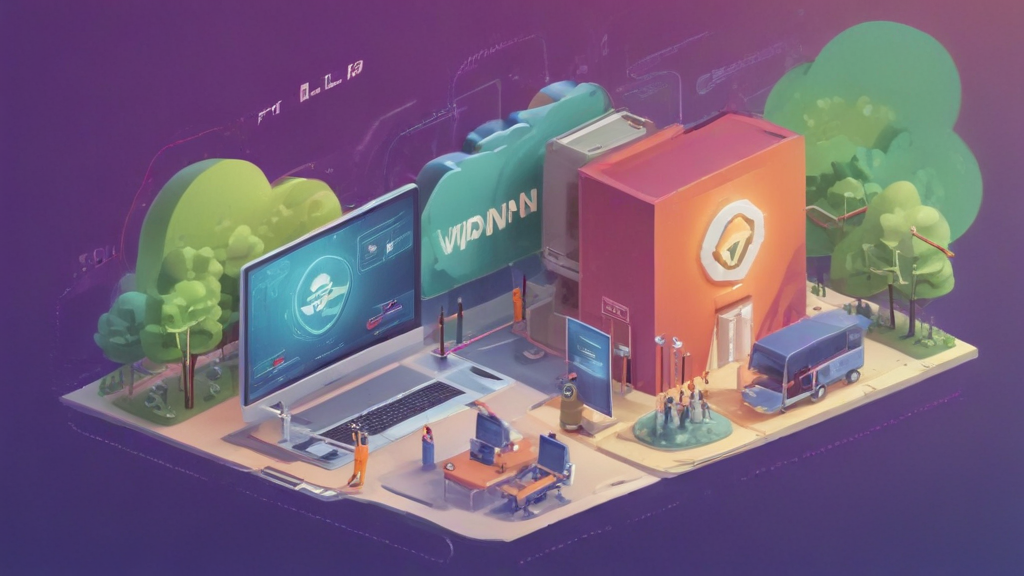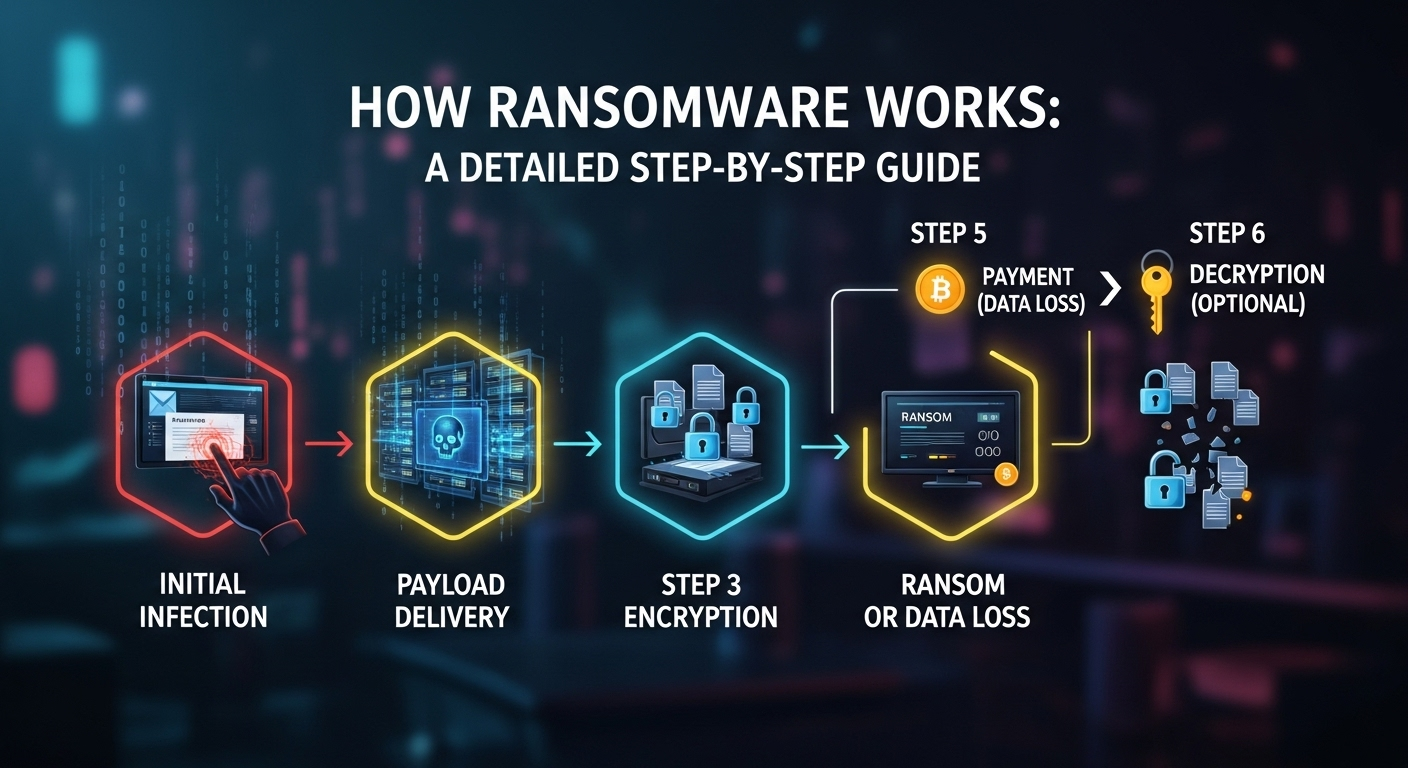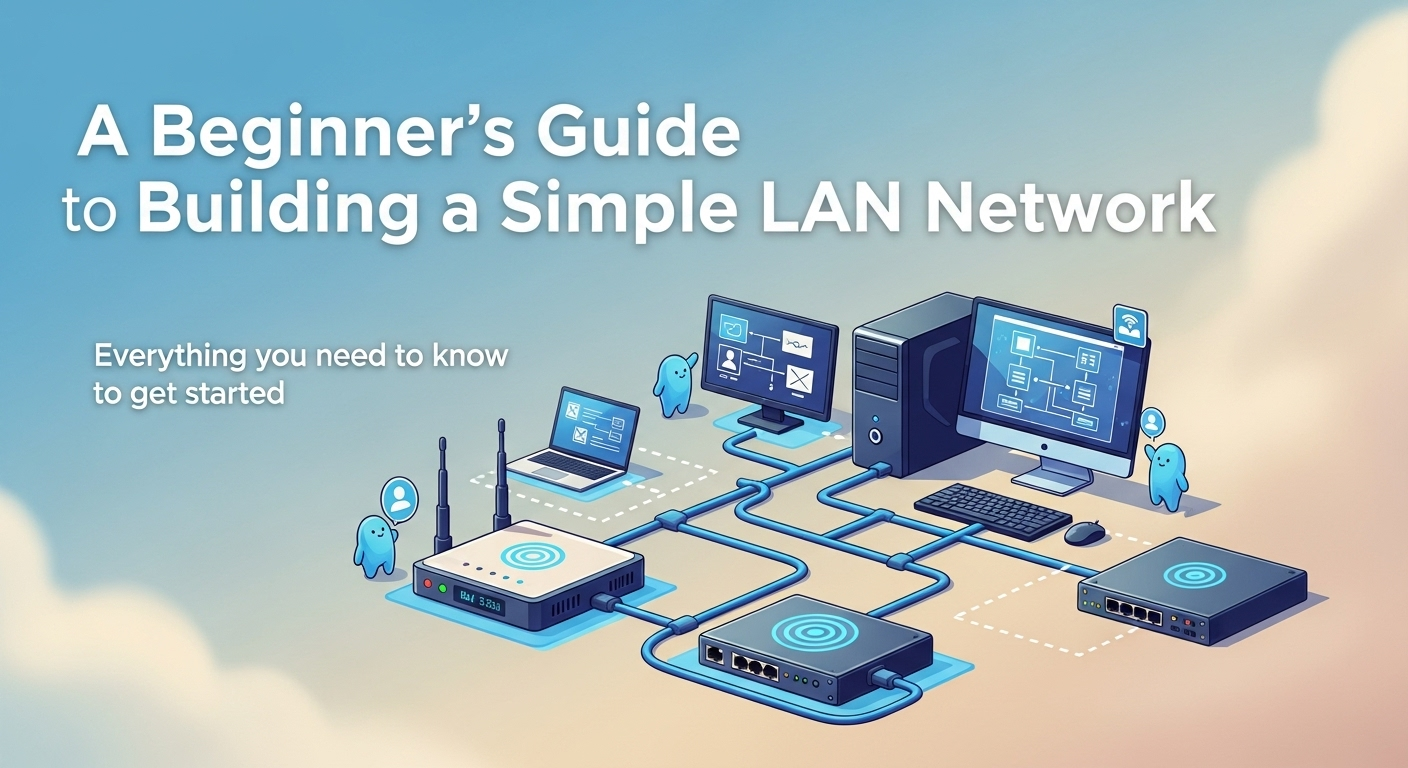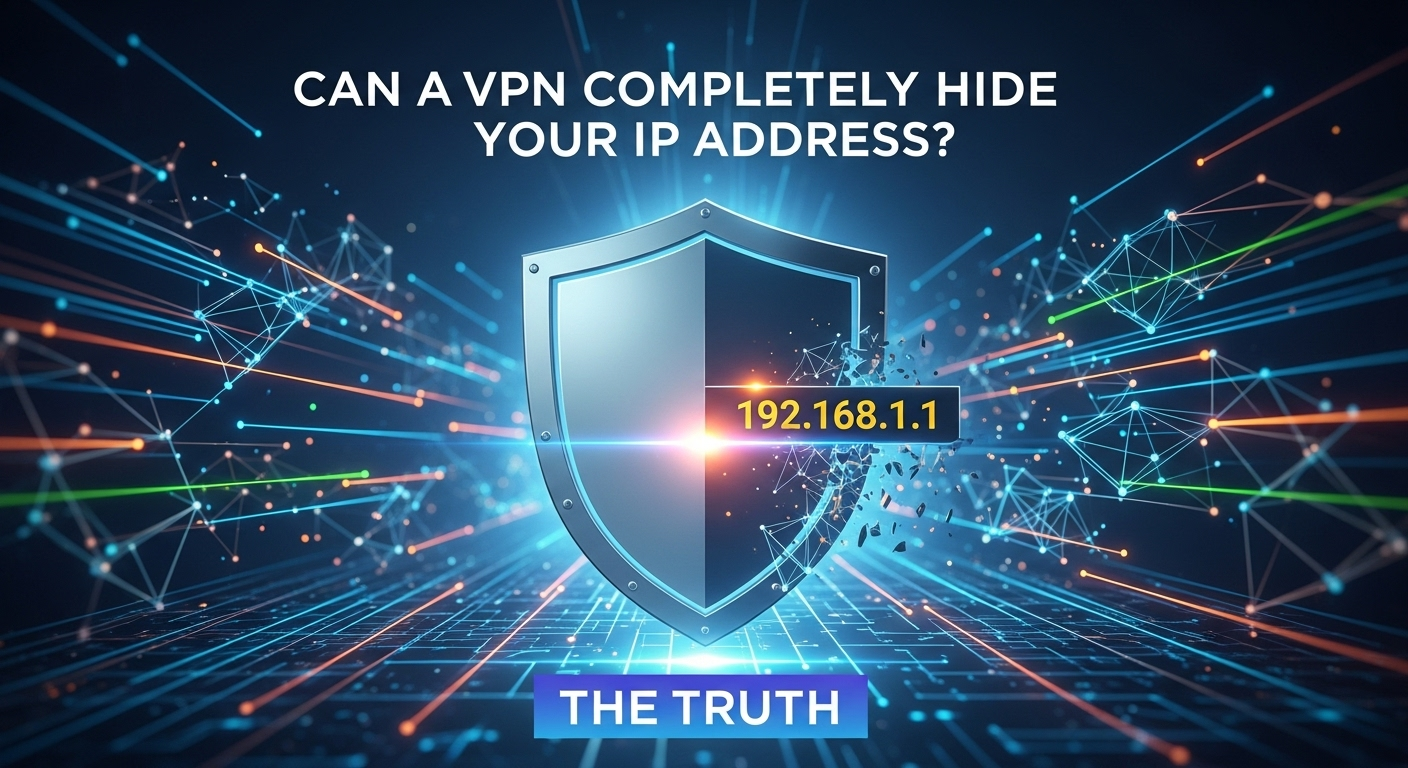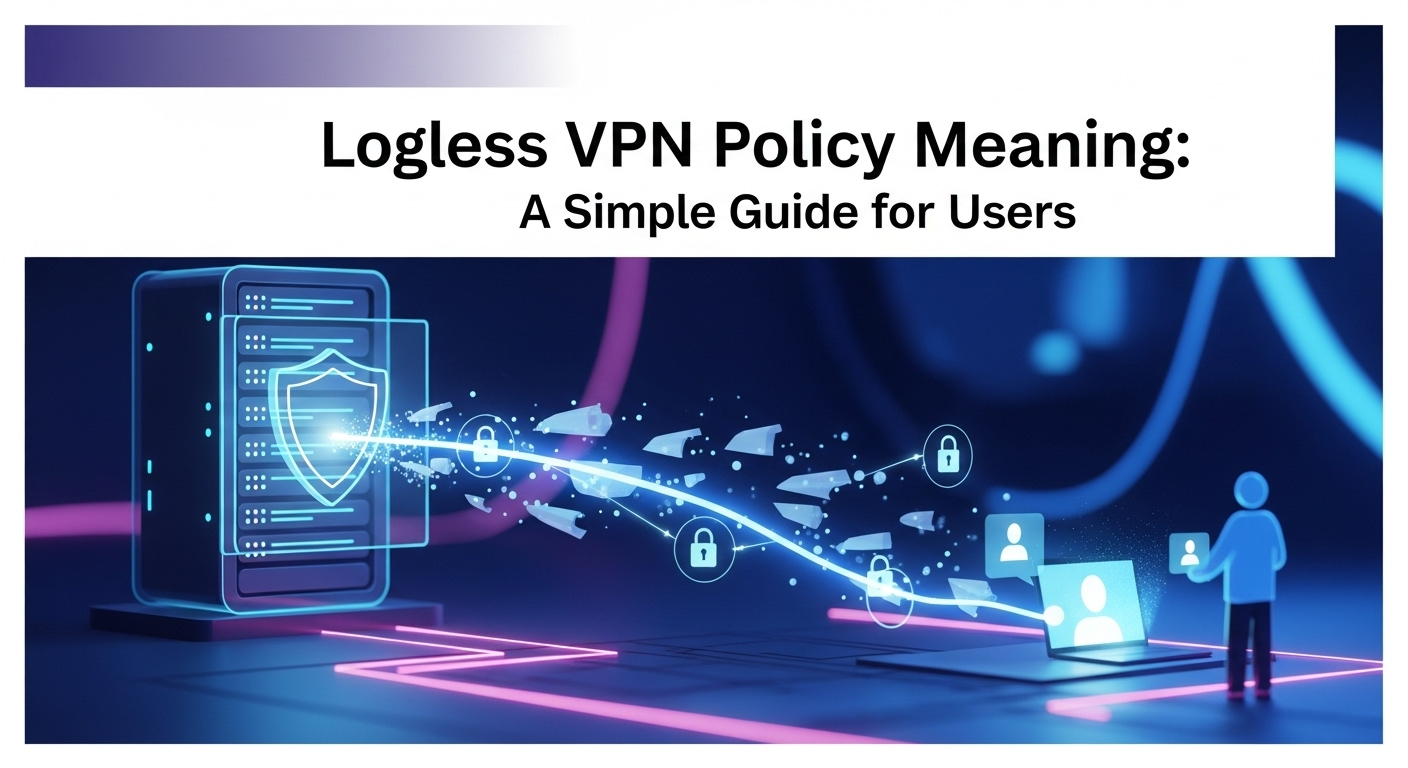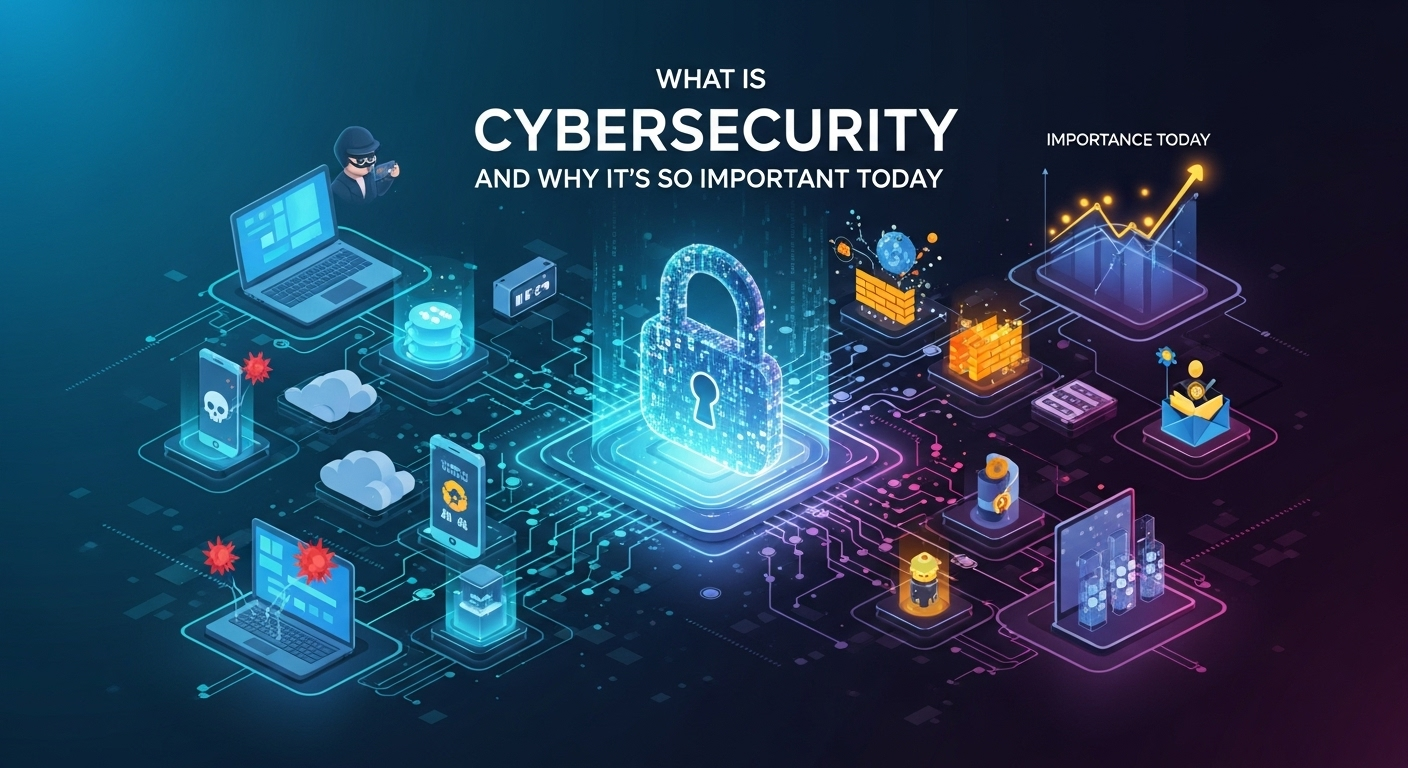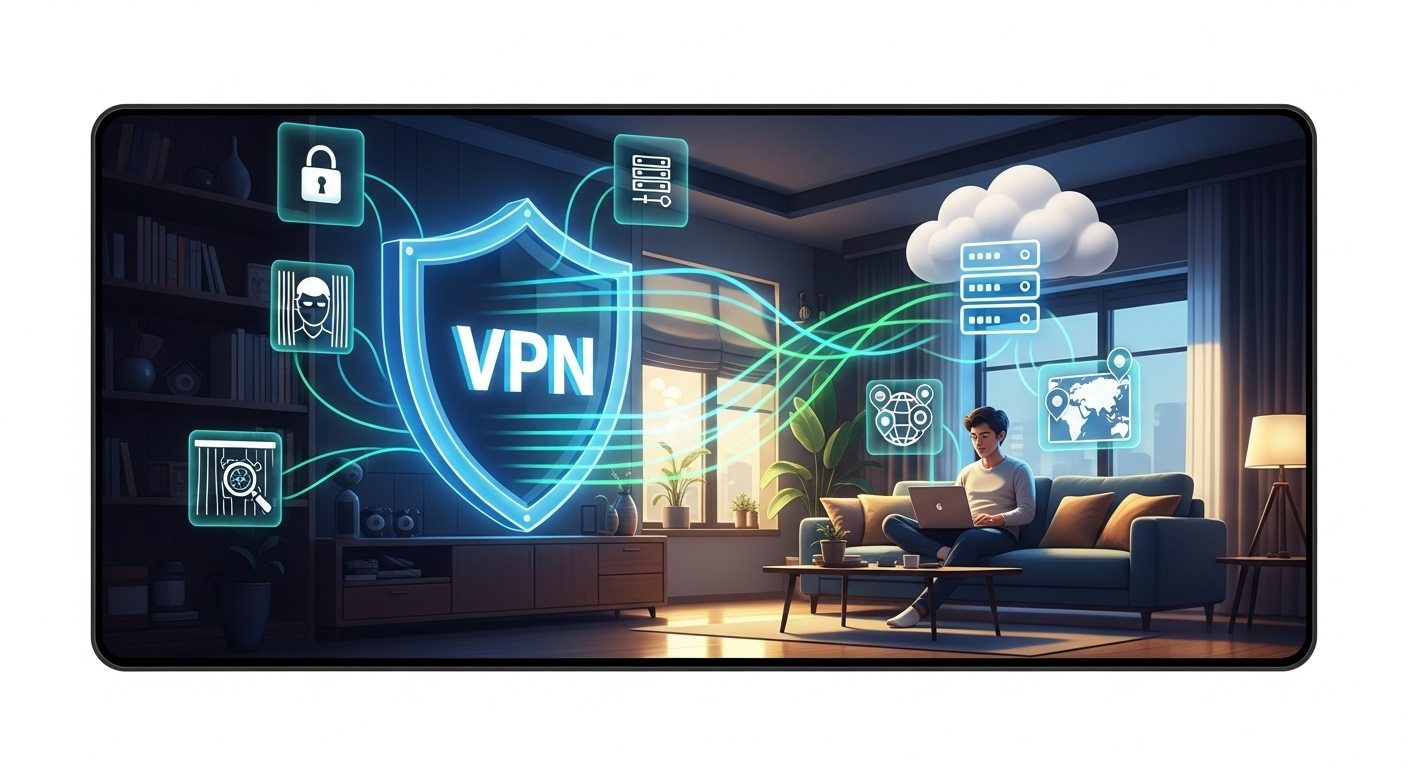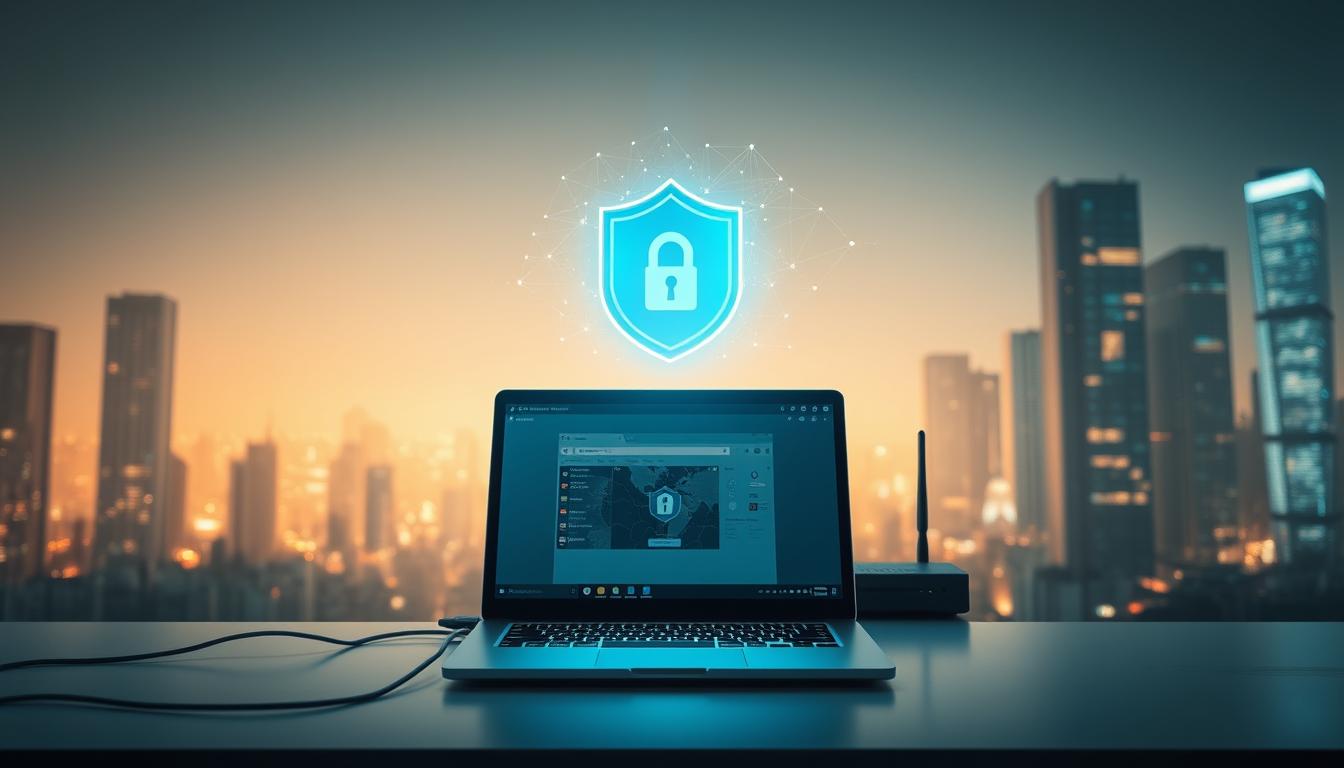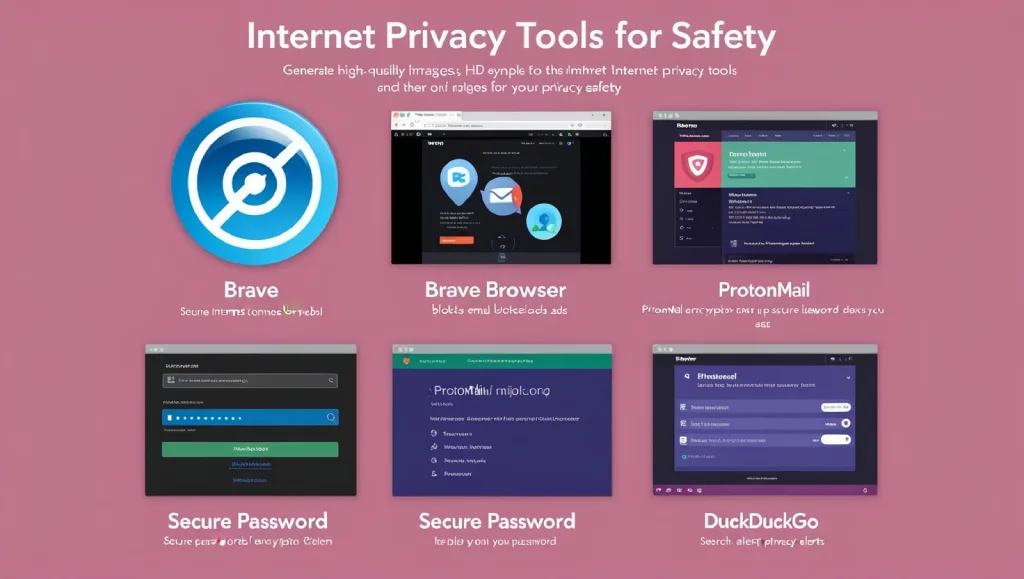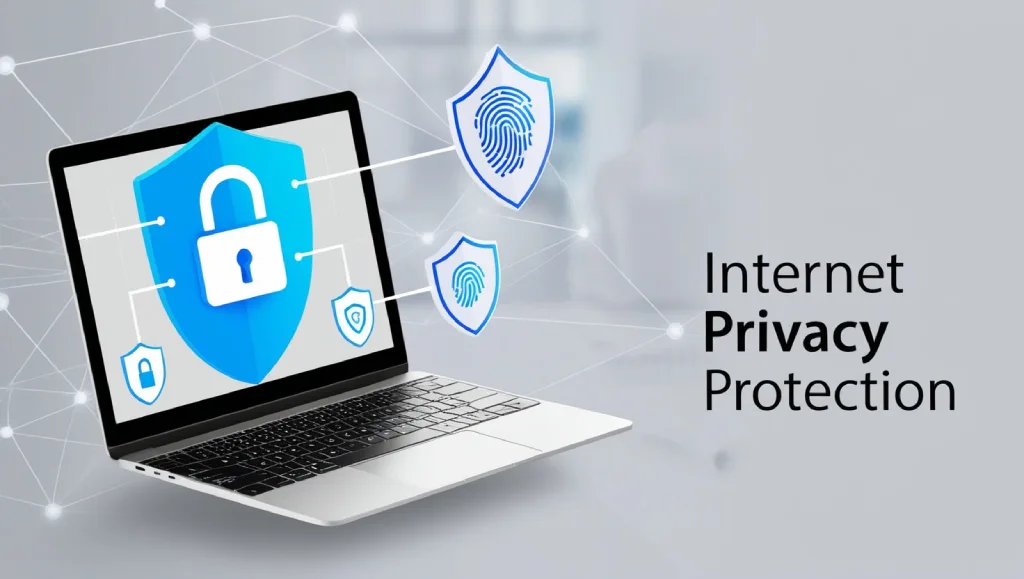Explore future trends in VPN for remote work, including enhanced security, faster speeds, and new features to improve remote connectivity and productivity.
As businesses increasingly adopt cloud services, the way we think about secure access is evolving. I’ve noticed a significant shift in how companies approach remote operations. Traditional models are being tested by modern demands, and it’s clear that they often fall short.
Decentralized infrastructures require more than just basic solutions. The challenges of ensuring robust security and seamless access are growing. Many providers struggle to meet compliance standards, leaving gaps that could expose sensitive data.
In this article, I’ll explore how advanced protocols and improved connectivity are shaping the landscape. These innovations are not just enhancements—they’re necessities for a secure and scalable approach to remote operations.
Table of Contents
ToggleKey Takeaways
- Cloud adoption is driving the need for better security solutions.
- Traditional models often fail to meet modern demands.
- Decentralized environments require advanced protocols.
- Compliance issues are a major challenge for many providers.
- Scalable and secure access is essential for remote operations.
Understanding the Evolving Landscape of Remote Work
The global workforce is embracing flexibility like never before. Recent studies show that 28% of employees worldwide now work remotely, with 35.1 million in the U.S. alone. This shift has fundamentally changed how businesses operate and how teams collaborate.
Current Remote Work Statistics and Trends
Data from 2023 highlights a significant rise in remote work adoption. Research by Great Place to Work® reveals that productivity among remote employees has increased by 13%. Stanford economist Nicholas Bloom also notes that companies offering flexible work options see higher employee satisfaction.
This trend isn’t slowing down. Businesses are investing in tools and solutions to support this new way of working. The demand for reliable remote access solutions has never been greater.
Impact on Employee Productivity and Collaboration
Flexible work environments have proven to boost efficiency. Employees report fewer distractions and better focus when working from home. However, collaboration can be challenging without the right tools.
Innovative solutions are bridging this gap. Platforms that streamline communication and project management are essential for maintaining team cohesion. As the workforce evolves, businesses must adapt to meet these changing needs.
Ultimately, the shift to remote work is reshaping the way we think about productivity and collaboration. Companies that embrace this change are better positioned to thrive in the modern workplace.
Limitations of Traditional VPNs for Remote Work
Traditional VPNs were once the backbone of secure remote access, but times have changed. As businesses expand their remote teams, these older systems struggle to keep up. The increasing number of devices and decentralized work environments have exposed significant flaws.
Security and Performance Challenges
One of the biggest issues with traditional VPNs is their inability to handle modern security demands. These tools often lack the advanced encryption needed to protect sensitive data. When multiple devices connect simultaneously, performance suffers. Slower speeds and higher latency become common, disrupting workflows.
For example, a company with a large remote team might experience frequent connection drops. This not only frustrates employees but also leaves the business vulnerable to cyber threats. “The centralized nature of these systems creates a single point of failure,” says a cybersecurity expert.
Issues with Scalability and Centralized Architecture
Scalability is another major drawback. Traditional VPNs rely on a centralized architecture, which struggles to support growing teams. As more devices connect, the system becomes overloaded, leading to inefficiencies.
Here’s a comparison of traditional VPNs versus modern needs:
| Aspect | Traditional VPNs | Modern Needs |
|---|---|---|
| Scalability | Limited | High |
| Security | Basic encryption | Advanced protocols |
| Performance | Slows under load | Consistent speed |
This table highlights the gaps between older systems and current requirements. Businesses need tools that can adapt to their evolving needs. Traditional VPNs, while once effective, now fall short in providing the necessary security and scalability.
As remote work continues to grow, companies must seek more adaptable solutions. The next section will explore how newer technologies are addressing these challenges.
Future Trends in VPN for Remote Work
Innovations in encryption and connectivity are reshaping how we approach remote operations. As cyber threats grow, the need for stronger protection has never been more critical. Businesses are turning to advanced methods to ensure their data remains secure and accessible.
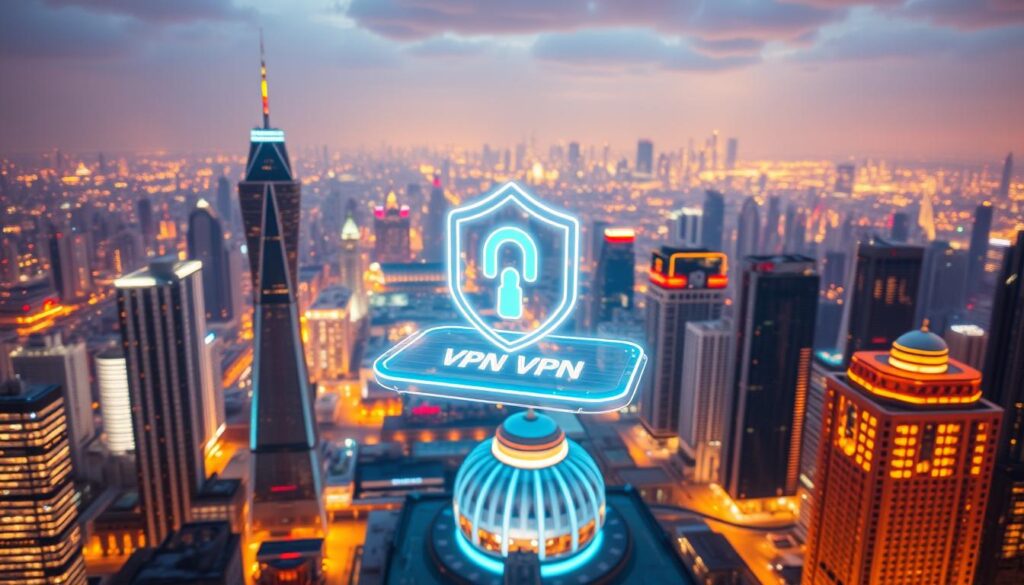
Advanced Encryption and Security Enhancements
One of the most significant advancements is the adoption of innovative encryption methods. These techniques provide stronger data protection, reducing the risk of unauthorized access. For example, end-to-end encryption ensures that sensitive information remains secure, even if intercepted.
Enhanced security features are also playing a crucial role. Multi-factor authentication and zero-trust models are becoming standard. These measures add layers of protection, minimizing vulnerabilities. “The goal is to create a system where no single point of failure exists,” explains a cybersecurity expert.
Improved Connectivity and Scalability Solutions
Connection stability is another area seeing major improvements. Advanced protocols are designed to handle high traffic without compromising speed. This ensures seamless access for remote teams, even during peak hours.
Scalability is equally important. Modern solutions are built to grow with businesses, supporting more devices and users as needed. This flexibility is essential for companies with expanding remote operations.
These advancements are not just trends—they are necessities. By embracing these features, businesses can create a secure and scalable environment for their teams. The future of remote access is here, and it’s built on innovation and reliability.
The Rise of Software-Defined Perimeter (SDP)
The shift toward dynamic security models is reshaping how businesses protect their operations. Traditional methods often fall short in today’s decentralized environments. Software-Defined Perimeter (SDP) is emerging as a game-changer, offering a more adaptable and secure approach.
Embracing a Zero Trust Model
SDP introduces a zero trust framework, ensuring access is granted only on a need-to-know basis. This model minimizes risks by verifying every user and device before granting access. “It’s about assuming nothing and verifying everything,” explains a cybersecurity expert.
This approach significantly reduces the attack surface. By limiting lateral movement within the network, SDP effectively mitigates potential threats. Businesses can operate with confidence, knowing their sensitive data is protected.
Cloud-Native Flexibility and Enhanced Protection
One of SDP’s standout features is its cloud-native architecture. This makes it highly adaptable for modern office environments, whether teams are on-site or remote. The system scales effortlessly, meeting the growing need for flexible security solutions.
Enhanced protection is another key benefit. SDP dynamically controls access management, ensuring only authorized users can connect. This reduces vulnerabilities and strengthens overall security. For management teams, this means fewer headaches and more efficient oversight.
As businesses evolve, so do their security needs. SDP provides a robust solution that adapts to these changes, offering both flexibility and peace of mind.
Emergence of Secure Access Service Edge (SASE)
Security and networking are merging into a single, powerful solution. Secure Access Service Edge (SASE) is at the forefront of this transformation. By combining traditional networking and security features, SASE offers a unified, cloud-based service that meets modern demands.
Integrated Security and Networking Functions
SASE integrates networking with robust security measures, creating a seamless experience for the workforce. This system ensures that data is protected while maintaining optimal performance. For example, traffic is routed through the nearest access points, reducing latency and improving speed.
Enhanced authentication processes are a key feature of SASE. Multi-factor authentication adds an extra layer of security, ensuring only authorized users can access the system. “This approach minimizes vulnerabilities and strengthens overall protection,” explains a cybersecurity expert.
Optimized Performance for Distributed Teams
Distributed teams benefit greatly from SASE’s design. The system is built to handle high traffic across multiple locations without compromising performance. This ensures that every member of the remote team can work efficiently, regardless of their location.
By tightly integrating security and networking, SASE reduces the complexity of managing separate solutions. This streamlined approach not only enhances performance but also simplifies oversight for management teams. The result is a more secure and efficient environment for the workforce.
Looking ahead, SASE has the potential to further reduce vulnerabilities in remote connections. As businesses continue to adapt, this converged solution will play a critical role in shaping the future of secure access.
Comparing VPN, SDP, and SASE Solutions
Choosing the right security solution can make or break your business’s operational efficiency. With options like VPNs, SDP, and SASE available, it’s essential to understand their differences. Each solution offers unique benefits, but they also come with trade-offs in cost, performance, and flexibility.

Cost-Effectiveness and Flexible Access
Traditional VPNs are often seen as a budget-friendly option. However, their centralized architecture can lead to higher long-term costs due to scalability issues. On the other hand, SDP and SASE provide more flexible access, adapting to growing teams without compromising performance.
For example, SASE integrates networking and security into a single cloud-based service. This reduces the need for multiple tools, saving both time and money. “The flexibility of SASE allows businesses to scale effortlessly,” notes a cybersecurity expert.
Here’s a quick comparison:
- VPNs: Lower upfront costs but limited scalability.
- SDP: Higher initial investment but better long-term flexibility.
- SASE: Combines cost-effectiveness with advanced features.
User Access Management and Role-Based Controls
Managing user access is critical for protecting sensitive data. VPNs often lack granular control, making it harder to enforce security policies. SDP and SASE, however, excel in this area with role-based controls and multi-factor authentication.
These features ensure that only authorized users can access specific resources. For instance, a marketing team might have access to campaign data but not financial records. This level of control minimizes risks while maintaining convenience.
From my experience, a hybrid approach often works best. Combining the strengths of VPNs, SDP, and SASE can create a robust security framework. This ensures both flexibility and protection, tailored to your business’s unique needs.
Cybersecurity and Data Protection Advancements
Cybersecurity has become a cornerstone of modern business operations. With the rise of hybrid work models, protecting sensitive data is more critical than ever. Companies are investing in advanced security features to safeguard their networks and ensure compliance with strict regulations.
Multi-Factor Authentication and Encryption Protocols
One of the most effective ways to enhance security is through multi-factor authentication (MFA). This method adds an extra layer of protection by requiring users to verify their identity in multiple ways. For example, a user might need to enter a password and a one-time code sent to their phone.
Encryption protocols also play a vital role. Advanced encryption ensures that data remains secure, even if intercepted. “Strong encryption is non-negotiable in today’s threat landscape,” says a cybersecurity expert. These measures are essential for protecting both company databases and individual sensitive information.
Mitigating Cyber Threats and Regulatory Compliance
Cyber threats are becoming more sophisticated, pushing companies to upgrade their network protections continuously. From ransomware to phishing attacks, businesses must stay ahead of these risks. Implementing robust security features is no longer optional—it’s a necessity.
Regulatory compliance is another critical factor. Laws like GDPR and CCPA require businesses to protect user data and report breaches promptly. Failure to comply can result in hefty fines and reputational damage. Here’s a quick overview of key compliance measures:
| Regulation | Key Requirement |
|---|---|
| GDPR | Data protection and breach notification |
| CCPA | Consumer data rights and transparency |
| HIPAA | Protection of health information |
These advancements in cybersecurity infrastructure are essential for supporting both remote and hybrid work models. By adopting these measures, businesses can create a secure environment that protects their operations and builds trust with their users.
Adapting to the Future of Remote Access Infrastructure
The way businesses manage access is transforming with cloud-based solutions. These tools are not just enhancing operations—they’re redefining how teams connect and collaborate. By leveraging the cloud, companies can create a more flexible and efficient environment for their workforce.
Integrating Cloud-Based Tools and Hybrid Models
Hybrid work models are becoming the norm, blending traditional office setups with virtual environments. Cloud integration plays a crucial role in this shift. It allows teams to access resources from anywhere, ensuring uninterrupted productivity.
For example, platforms like Microsoft Teams and Google Workspace streamline communication and project management. These tools simplify collaboration, making it easier for employees to stay connected. “The cloud is the backbone of modern hybrid work,” says a tech expert.
Here’s how cloud-based tools are revolutionizing access:
- Centralized resource management for better efficiency.
- Scalable solutions that grow with your business.
- Enhanced security features to protect sensitive data.
Enhancing User Experience with Seamless Connectivity
Seamless connectivity is essential for maintaining high productivity levels. Innovative tools ensure that employees can work efficiently, regardless of their location. This is especially important for distributed teams that rely on secure remote access.
Advanced protocols minimize latency and improve speed, even during peak hours. This ensures that every team member can perform their tasks without interruptions. “Reliable connectivity is the foundation of a successful remote workforce,” notes a network specialist.
Looking ahead, advancements in cloud technology will continue to drive efficiencies. Businesses that embrace these innovations will be better equipped to meet the demands of a dynamic workforce. The future of access infrastructure is here, and it’s built on flexibility, security, and seamless connectivity.
Read More : How to Optimize VPN for Remote Work
Conclusion
The landscape of secure access is rapidly changing, driven by the need for robust solutions. Traditional methods often fall short in today’s decentralized environment, leaving gaps in both security and performance. This has paved the way for advanced models like SDP and SASE, which address these challenges head-on.
These solutions prioritize encryption and seamless connectivity, ensuring that every user can access resources securely, regardless of their location. By adopting these innovations, businesses can create a more adaptable and secure framework for their operations.
As the demand for reliable access grows, it’s clear that staying ahead requires continuous adaptation. Embracing these changes is not just about protection—it’s about sustaining growth in an ever-evolving digital world.
Curious about the future of VPNs for remote work? Stay updated with the latest trends at VPNPieces.com and optimize your remote work setup!
FAQ
What are the main security challenges with traditional VPNs for remote access?
Traditional VPNs often face issues like limited scalability, centralized architecture, and performance bottlenecks. These can lead to vulnerabilities, especially when handling sensitive data across distributed teams.
How does a Software-Defined Perimeter (SDP) improve remote work security?
SDP adopts a zero-trust model, ensuring only authorized users and devices can access company resources. It provides cloud-native flexibility and enhanced protection, making it ideal for modern hybrid work environments.
What is Secure Access Service Edge (SASE), and why is it important?
SASE combines networking and security functions into a single solution. It optimizes performance for distributed teams, offering integrated tools for secure remote access and threat mitigation.
How do advanced encryption protocols enhance VPNs for remote work?
Advanced encryption ensures that data transmitted between remote employees and company networks remains secure. This reduces the risk of cyber threats and helps maintain compliance with regulatory standards.
What role does multi-factor authentication play in remote access solutions?
Multi-factor authentication adds an extra layer of security by requiring users to verify their identity through multiple methods. This significantly reduces the risk of unauthorized access to sensitive company resources.
How can cloud-based tools improve remote work productivity?
Cloud-based tools offer seamless connectivity and flexibility, enabling employees to access resources from any location. This enhances collaboration and ensures a consistent user experience across devices.
What are the benefits of integrating hybrid work models with VPN solutions?
Hybrid work models combined with VPNs provide employees with the flexibility to work from anywhere while maintaining secure access to company networks. This boosts productivity and supports a distributed workforce.
How do SDP and SASE compare to traditional VPNs in terms of cost-effectiveness?
SDP and SASE solutions often offer better cost-effectiveness by reducing the need for multiple tools. They provide scalable, integrated security and networking functions tailored to modern remote work needs.

